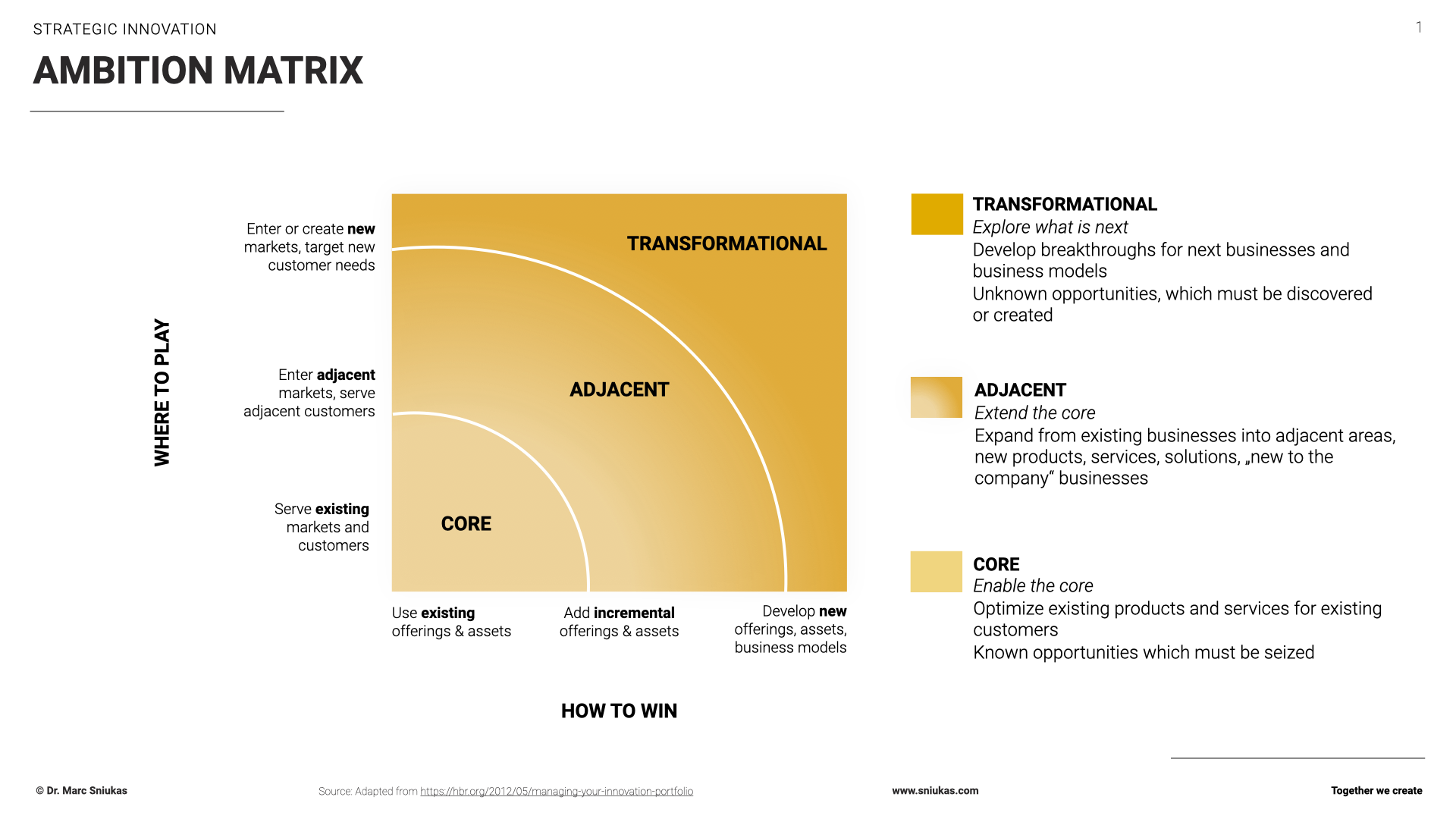Confront the Brutal Facts — Is your Strategy Really Working?
When you start thinking about your strategy, you first need to honestly evaluate what is going on, both inside your organization and in the market....
3 min read
Dr. Marc Sniukas
Mar 16, 2023 12:00:00 AM
If you want to be happy, set a goal that commands your thoughts, liberates your energy and inspires your hopes. — Andrew Carnegie
If you want to succeed in business, you need to set your ambitions and aspirations for your company. Yet, many entrepreneurs don’t take time to think about their aspirations, and many organizations set targets simply by continuing last years budgets or adding 10% growth to revenues.
Here are five steps that help you set stretching strategic ambitions for your company.
Defining your organization’s ambitions starts with understanding what’s currently going on in your company and your market. In a previous article, I outlined the details of how to assess your current strategy, the state of your nine pillars, what’s happening in the market and what all of this means for your strategy.
Some people say that you should first develop your vision, aspirations, and ambitions, and then evaluate the current situation. In my experience, this might make sense if you’re thinking about a complete overall and renewal of your strategy. And if you’re dead serious about such a radical move. This might be necessary if there’s a high need for change in a turnaround situation, for example. For most organizations, such a radical move is not required, and there are always things that are working well, and that can be leverage.
Another reason to start with the current situation is that your ambitions should be founded on facts and the truth. Jim Collins’ hedgehog concept asks: What are you the best at? What makes money? Evaluating your current situation, what’s working well and what isn’t, will help you answer these questions.
Your strategy hypothesis is a statement on what you think will happen in your industry or your market in the future. One of the automotive industry’s strategy hypothesis, for example, is that electric vehicles are the future. Daimler recently announced to split the truck and car business, based on the premise that the two are “facing major technological and structural changes”.
Having a strategy hypothesis will allow you to make sure your strategic decisions are aligned with what you think will be important in the future. In practice, you are likely to have a strategy hypothesis for the market and one on how you want to position yourself and what you believe will be important to customers. If we stay with the automotive industry, while every company has accepted that electric vehicles are the future, car manufacturers still have different opinions on what will be important for specific customer segments within that hypothesis. BMW or Porsche are still about sportiveness, for example. Although now electric. Your strategy hypothesis is not your strategy! It just frames the playing field. We will discuss how to play on the field in the next article.
If you’re not sure yet about your strategy hypothesis, you can formulate alternative scenarios, ask what if, and define ambitions for each of the scenarios.
Two questions you should definitely think about when formulating your ambitions are:
No matter your industry, segment, location, or type of company, whether small, medium, or large, every organization has to answer these two questions. Think of them as “meta strategic priorities”. Every conversation I have with executives these days falls into one if not both of these two buckets.
These two dimensions need to be part of your ambitions for your organization. No matter what.
When talking strategy, it’s easy to only focus on the business. Yet, people will have to execute your strategy. Leaders will need to inspire or at the very least, show some commitment to the strategic decisions taken. And even if it’s possible to commit without having agreed, in my experience, a lack of emotional buy-in will be felt by your teams and the efforts for implementing the strategy will be lacklustre.
Hence, it would be best to spend some time thinking about and discussing personal ambitions within your executive team. Not only will this raise the commitment to the strategy, but it will also reinforce your team spirit.
Here are a couple of questions to consider:
Finally, it would be best if you thought about clear strategic goals, for example:
The Ambition Matrix can also help clarify your aspirations.

Once you have gone through these five steps, thought about them for yourself and discussed them with your team, your ambitions will start to emerge and become clear.

When you start thinking about your strategy, you first need to honestly evaluate what is going on, both inside your organization and in the market....

The importance of strategy today. Strategy is now more critical than ever. In turbulent times the seduction to keep on doing what you're doing,...

Do you ever feel like strategy work is too messy, too complicated, or too wasteful? You're not alone.